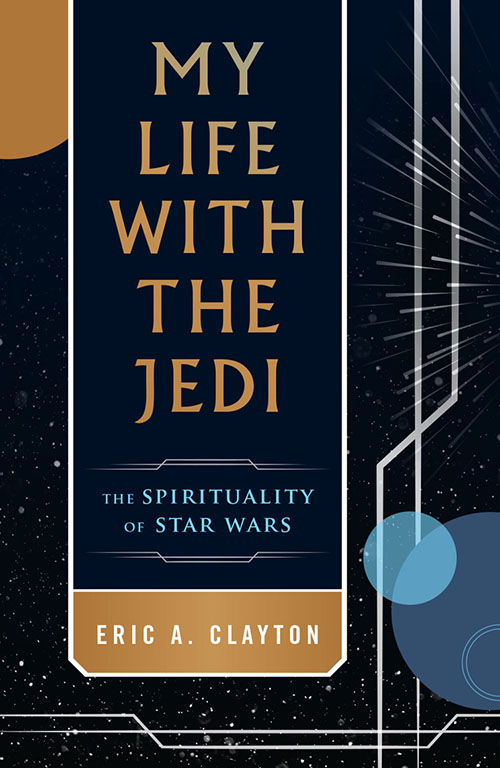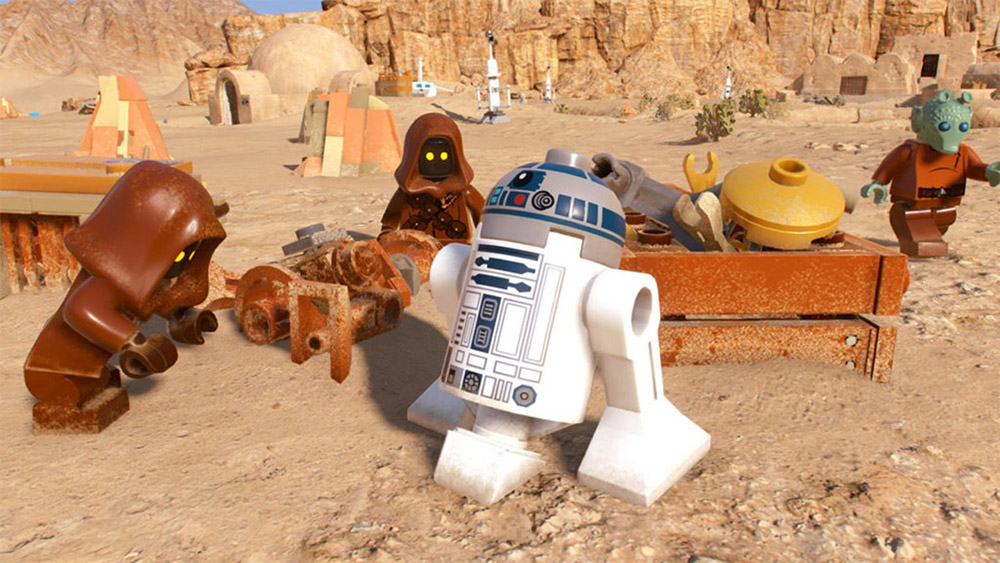
Jedi Qui-Gon Jinn (Liam Neeson), left, and his apprentice Obi-Wan Kenobi (Ewan McGregor) take on Sith Lord Darth Maul (Ray Park) in ''Star Wars: Episode I — The Phantom Menace.'' (CNS/Lucasfilm)

The religiosity of "Star Wars" has filled many books in the four-and-a-half decades since it exploded onto screens and changed our galaxy forever. Monks, meditations, a divine Force connecting all living things, and contradicting belief systems around said Force make for some highly spiritual sci-fi. As such, many religious traditions, from Daoism to the Abrahamic faiths, find parallels within the "Star Wars" mythos.
Ignatian spirituality author and "Star Wars" superfan Eric Clayton is in good company with his latest book, My Life With the Jedi: The Spirituality of Star Wars. But by focusing specifically on the link between the teachings of St. Ignatius Loyola and the wisdom of the Jedi Order — both devoted to careful attunement to the presence of the Divine within — Clayton carves out a niche not just for Catholics and geeks, but for anyone looking for a fresh, personal, action-oriented boost to their spiritual life and practice.
Guiding the reader through 12 compact chapters, each with an aptly named "Wayfinder Exercise" to prompt Ignatian-inspired reflection, My Life With the Jedi is an ideal companion for anyone who's fancied themself a Jedi at heart, felt intrigued (or intimidated) by Ignatius and his Spiritual Exercises, or wondered if there's anything to be learned, really, from a galaxy far, far away.
Advertisement
Clayton's breadth of knowledge of and love for "Star Wars" — and Ignatius — is apparent and infectious. He freely mines the films, books, video games and TV shows (even the infamous specials) with a degree of detail that will impress any fan. Yet he manages to turn even the obscurest of references into thoughtful moments of contemplation.
For example, an entire chapter is about "Sand," a wry nod to Anakin Skywalker's awkward complaint about it from "Attack of the Clones," and also a clever way to illustrate the way that the "coarse, rough, irritating" sands in our lives may actually be guiding us toward what we — and, as Ignatius teaches, God — truly desire.
Clayton also incorporates other authors' reflections on the spiritual core of "Star Wars" with surety and respect. One of the book's strongest sections, a chapter titled "Indifference," explores the connections between "Star Wars," the Ignatian concept of indifference and the Zen concept of wu wei or "nonaction." With "Star Wars" as the fulcrum, Clayton illuminates the similarities between these deceptively challenging teachings and explores what they look like in action, showing how indifference/wu wei (or "non-attachment" in Jedi-speak) is on full display in the quiet heroism of none other than R2-D2.
Interfaith connections like this broaden the book's reach while remaining mindful of each tradition's individuality.

R2D2 is seen in a scene from the video game "Lego Star Wars: The Skywalker Saga." (CNS/Warner Bros.)
Similarly, Clayton draws on many other authors' insights into the life and teachings of Ignatius as he guides his readers more deeply into "Star Wars," Ignatian spirituality and ourselves.
This makes My Life With the Jedi an excellent primer for coming to understand not only the Spiritual Exercises but also, to a degree, the saint himself: a soldier-turned-mystic, compelled by great loss into a self-imposed exile until the time came to reemerge, forever changed, on a mission to spread peace and connection with the Divine — a forerunner of Obi-Wan Kenobi and his cave, or even Yoda and his swamp, if there ever was one. I finished the book eager to learn more about him. (And eager to rewatch the series "Obi-Wan Kenobi.")
Like a true Jedi master, author Eric Clayton finds balance between exposition and reflection, thoughtful questions and helpful answers, nitty-gritty details and broadly applicable takeaways.
While I do have a deep knowledge of "Star Wars," my understanding of Ignatian spirituality was surface-level going into My Life With the Jedi. Perhaps this makes me an ideal audience, but I got the distinct sense while reading that the appeal is far broader than "Star Wars" geeks who happen to be Catholic.
Clayton's writing is warm, accessible and clear. His gently self-deprecating humor and obvious affection for the subject matter makes it easy to stay with him as he dives into the deepest corners of "Star Wars" lore. And, like a true Jedi master, he finds balance between exposition and reflection, thoughtful questions and helpful answers, nitty-gritty details and broadly applicable takeaways.
My Life With the Jedi accomplishes what the best spiritual guidebooks do: It avoids lectures in favor of lessons, and destinations in favor of journeys. It asks good questions and treads lightly with the answers, favoring gentle proddings over heavy-handed interpretations of both "Star Wars" and Ignatian spirituality. And while likening it to our own personal Yoda sitting on our backs as we train in the Force is maybe a little too geeky, My Life With the Jedi certainly imparts with the reader a sense of awakening to the spark of the universe within that calls us, in the words of the Jedi, "to light and life."
This is the Way.








